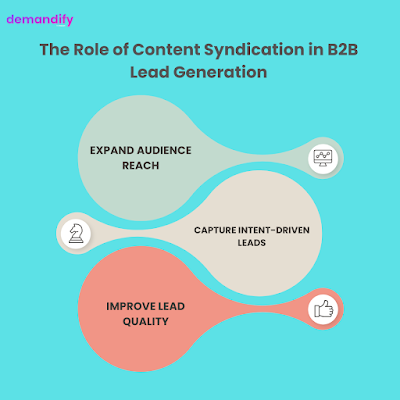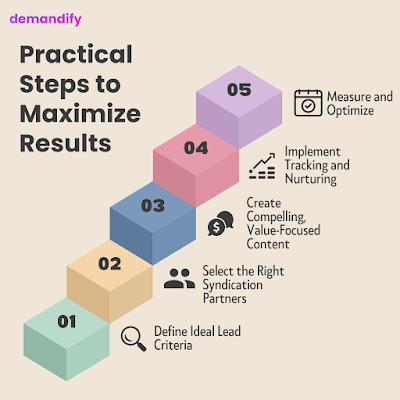Let's confront the reality that in B2B marketing, generating leads is only the first step. The real value is in what occurs after a lead is generated. With a well-designed lead nurture program, a business can use its pipeline and begin to reap the benefits. In its most basic form, lead nurturing is the attempt to smoothly and progressively guide prospects with appropriate and well-timed content that conversion is greater than mere awareness.
Due to the overcrowded digital landscape where content is
abundant, today’s buyers are extremely selective. They are additionally
well-informed, which makes them judicious when choosing a company to work with.
A generic, one-size-fits-all, sales pitch will not in any way help. You will
need to invest time and resources to develop content that responds to their
business pains.
Understanding the Buyer Journey
Each B2B buyer journeys with different preferences, unlike
the traditional buyers waiting for a sales call. During this time, they come
across various content pieces and the same content is not suitable for each
stage. A blog post detailing the solution is not suitable for all stages.
For example, someone with little knowledge of a topic one is
grappling with will want to know the basics, and in this case a blog or
infographic will be suitable, while a more knowledgeable learner will want to
see more detailed case studies and testimonials.
The Power of Content in Lead Nurturing
In your absence, content serves as your dialogue with the
lead. It informs, nurtures credibility, and effectively moves leads along the
journey without being overly aggressive. It is important that content is not
overly simple. It also caters and resonates with the lead emotionally.
The blend of emotional storytelling and factual, logical
information is incredibly beneficial to your brand and elevates it as a
‘solution handy.’
Types of Content That Drive Nurturing Success
·
Educational Content
Consider blogs, whitepapers, and eBooks.
They clarify the buyer’s challenges and illuminate credible solutions.
·
Case Studies and Success Stories
Nothing rivals tangible examples. Case
studies and testimonials illustrate your offering’s impact and swiftly
cultivate trust.
·
Webinars and Virtual Events
Webinars—whether live or archived—let
audiences engage and ask questions, providing a deeper, more credible
experience as they move closer to a decision.
Aligning Content with Lead Stages
·
Top-of-Funnel (Awareness)
Scatter compelling blogs, simple
infographics, and short explainer videos. Ignite interest and earn attention.
·
Middle-of-Funnel (Consideration)
Deliver webinars, step-by-step guides, and
structured email sequences. You’re gradually deepening their curiosity.
·
Bottom-of-Funnel (Decision)
Deploy product walk-throughs, in-depth case
studies, and transparent pricing sheets. Here, every asset’s job is to trigger
a clear commitment.
Personalization with Intent Data
B2B
intent data reveals exactly what prospects are investigating online,
surfacing the topics, products, and competitors they’re exploring. By anchoring
your nurture plays to these signals, you move beyond assumptions and latch onto
genuine interest.
When someone clicks into a product-comparison piece, your
follow-up should pivot to user testimonials, case studies, or side-by-side
feature matrices that answer their unspoken questions.
Email Workflows and Content Triggers
Craft automated sequences that light up the moment a lead
reveals a digital intent. A visit to a pricing page or a deep dive into a
specific feature can fire off an immediate, relevant piece of content—whether
it’s a product sheet, a webinar invite, or a special offer—ensuring you stay
relevant and timely.
Role of B2B Content Syndication
B2B
content syndication puts your best resources in front of wider, hungry
audiences. Push whitepapers, guides, or infographics through third-party
networks and industry hubs to pull prospects into your lead funnel while
they’re already in a learning mindset.
Ensuring Consistency Across Channels
From the moment a lead first opts in to every follow-up
email, LinkedIn post, or nurture page they visit, the narrative must remain
seamless. A unified story across every platform reinforces recognition and
nurtures the trust that turns a one-time click into a lasting customer.
Measuring the Impact of Nurture Content
Creating nurture content is just the start; measuring
results is the finish line. Keep an eye on open rates, click rates, lead
movements through the funnel, and the final conversion numbers. Platforms such
as HubSpot, Pardot, and Marketo provide the granularity you need to see what
resonates and what stays flat.
Common Mistakes to Avoid
·
Overloading leads with too many emails at the
outset
·
Relying on a single content type, like blog
posts, and nothing else
·
Failing to match content to specific sales
funnel stages
·
Disregarding data and treating all content as
equally successful
How to Keep Content Evergreen and Updated
Schedule audits every three months. Refresh stats, eliminate
outdated examples, and replace old images. Convert existing work into fresh
formats—a webinar might become an infographic, a blog series, and a slide deck,
all from the same core material—saving effort and widening exposure.
Integrating Content with CRM and Marketing Automation
Integrate lead scoring and CRM data into your content
strategy. In Salesforce and HubSpot, you can use smart tags so that your
nurture tracks trigger the perfect piece, at the perfect moment, for the
perfect lead.
Building a Feedback Loop from Sales
Your sales team hears the same questions repeatedly. Record
that feedback and loop it back into your content calendars. If they keep
fielding inquiries about ROI, an ROI justification piece should be the next
item you produce, ensuring your content stays pruned and purposeful.
Conclusion
The heart of any lead nurture initiative lies in its
content. By delivering the right message at the right time, you shepherd
prospects from the first flicker of interest to their final, confident
commitment. When you layer in personalized insights derived from intent data,
and then extend your reach through thoughtful content syndication, you
turn a nurturing process into a powerful growth engine.
Read Other Information:
How
to Use Automation to Scale B2B Demand Generation Efforts
How
Predictive Analytics Enhances Precision Marketing Campaigns
How
Intent Data Platforms Support Content Syndication Strategies
How
Call-Back Consent Impacts Lead Qualification and Nurturing











.png)



%20(1).jpg)











